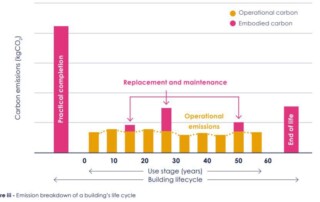The Reuse Imperative: Older Buildings as Climate Assets
Image: The 1900 Kakaako Pumping Station which had stood in disuse for decades was revitalized in 2016 as the Nā Kūpuna Makamae Community Center. The project received a Preservation Honor Award in 2017 and is an excellent example of adaptive reuse in the Islands. Photo © Nan, Inc. 3/18/22: Jim Lindberg, a senior policy director at the National Trust, has written a strong case for utilizing building reuse as an effective tool to prevent climate change. Recent flash flooding and coastal erosion at home here in Hawai‘i underline the urgency for preventative action. Lindberg proposes actionable policy recommendations to spur discussion and innovation. His article is reposted here. Building reuse will be one of the topics explored as part of an upcoming Climate Action webinar series organized by the Sustainability and Climate Action Working Group of the Preservation Priorities Task Force, the National Trust’s collaboration with the National Preservation Partners Network. Read more about the April 12th webinar at the end of Lindberg's article. The Reuse Imperative By Jim Lindberg, Senior Policy Director, the National Trust for Historic Preservation The urgency of reducing embodied carbon emissions inverts common perceptions about older buildings and climate change. Rather than outdated structures that we hope to replace, older buildings should be valued as climate assets that we cannot afford to waste.” From “Avoiding Carbon: Mitigating Climate Change through Preservation and Reuse” in Issues in Preservation Policy: Preservation, Sustainability, and Equity. Last month’s report from the United Nations Intergovernmental Panel on Climate Change (IPCC) warns that we are falling behind in the race against global warming. To avoid what one of the report’s co-authors describes as “a sub-optimal future,” we must use every tool available to reduce carbon emissions. One of those [...]


